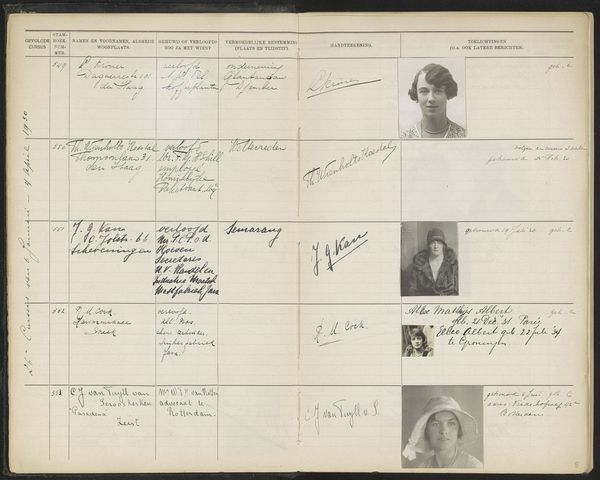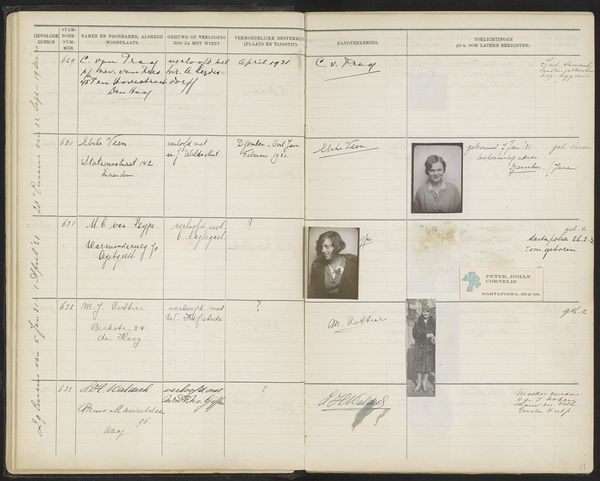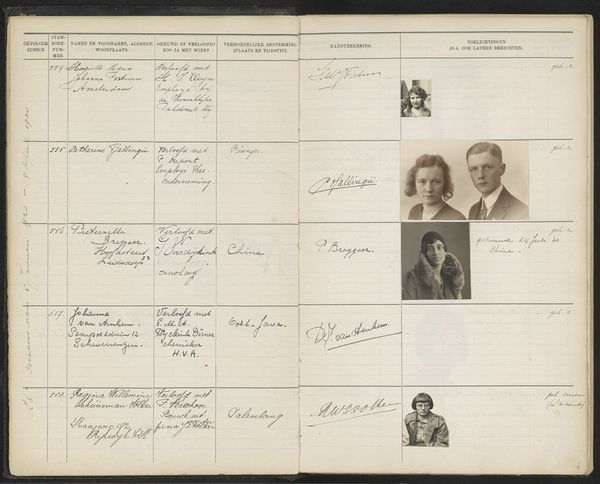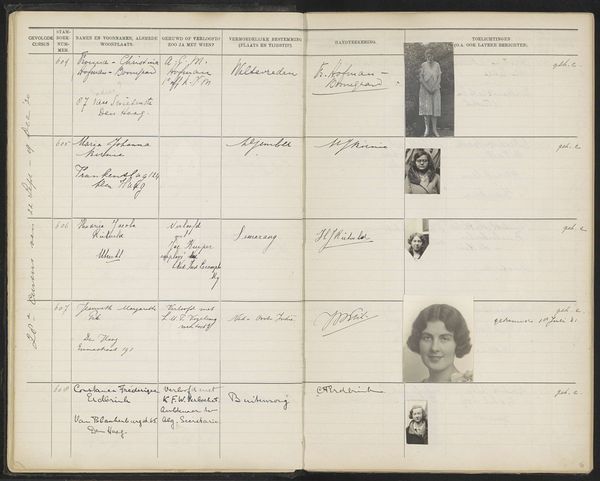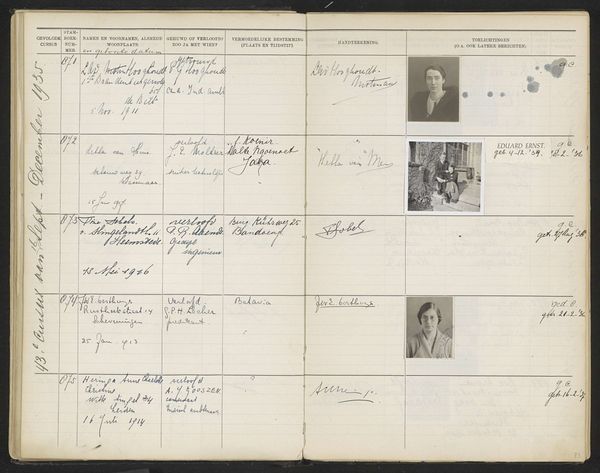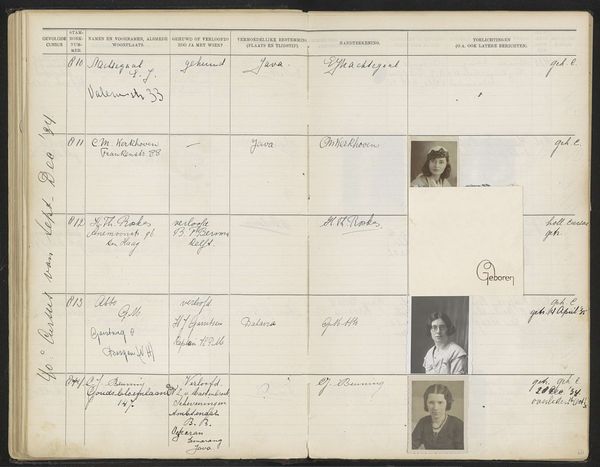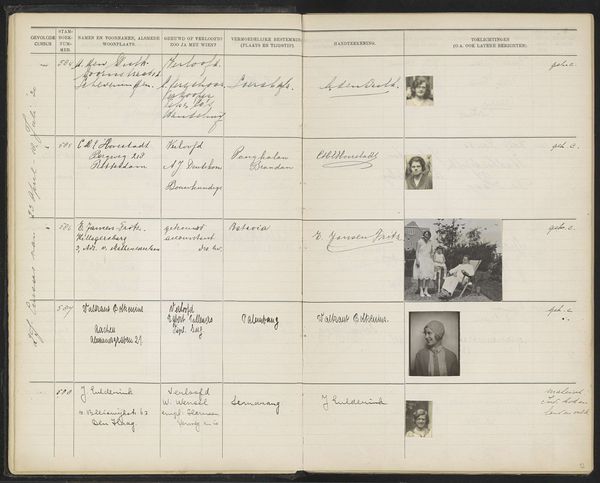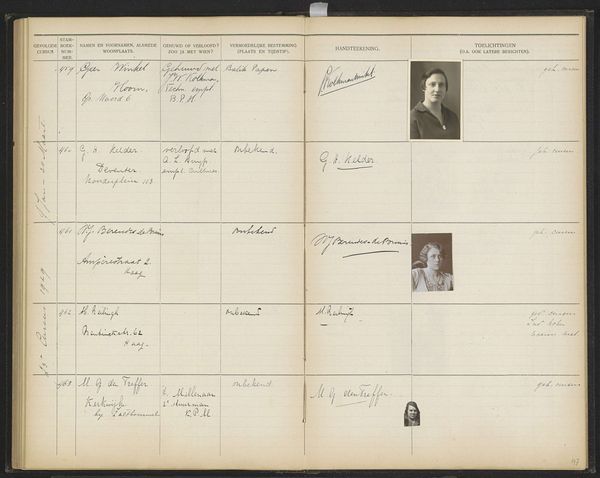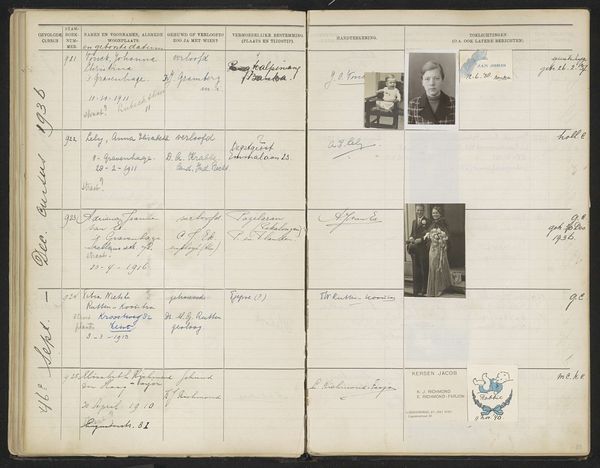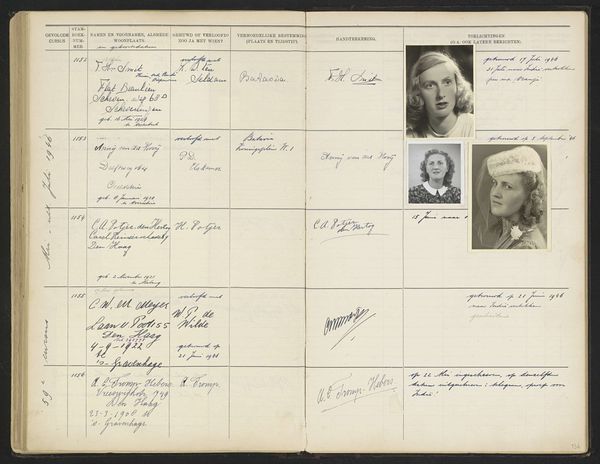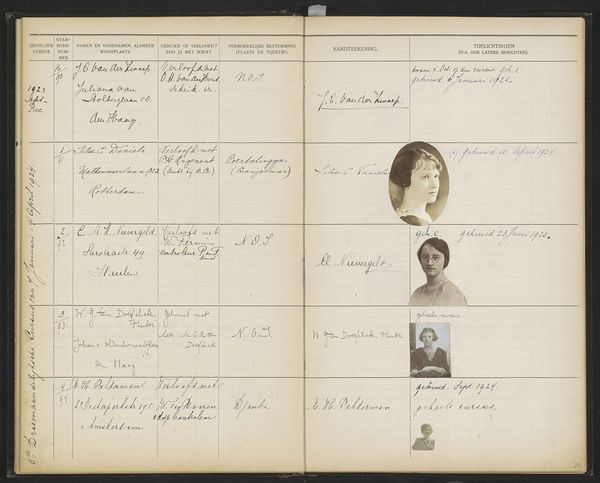
Blad 3 uit Stamboek van de leerlingen der Koloniale School voor Meisjes en Vrouwen te 's-Gravenhage deel II (1930-1949) Possibly 1930 - 1936
0:00
0:00
paper, photography
#
portrait
#
paper
#
photography
#
academic-art
Dimensions: height 337 mm, width 435 mm
Copyright: Rijks Museum: Open Domain
Curator: This is page three from the register of students at the Colonial School for Girls and Women in The Hague, likely created between 1930 and 1936. It's rendered on paper using photographic portraiture. Editor: The arrangement is striking; such strict grid lines! But also very intimate somehow, with these small portraits looking out at us from within the rigid structure. It makes me wonder about each woman pictured here. Curator: Precisely, I’m immediately struck by how these photographs operate. Consider how each student has their photo alongside biographical data: place of origin, former training, even handwriting samples. The image and the text act as visual proofs and documentation of these young women's backgrounds. Editor: I find the varying compositions fascinating too. Some of the portraits are tightly cropped headshots; others offer a bit more of the individual’s setting or attire. That single portrait, for example, with the subject's face surrounded by trees--it feels almost romantic! Curator: The choices behind these compositional differences undoubtedly had purpose, probably to document diverse social positions and backgrounds of individuals training to become civil servants in colonial outposts. Consider how this institutional approach served the Netherlands in managing its colonies abroad. Editor: Right, that’s essential. Thinking structurally, there’s also something compelling about the contrast between the uniformity of the pre-printed grid and the individuality represented in these photos and signatures. What kind of control was implied? What does that imply for their identities? Curator: Precisely, you’ve pointed towards the paradox central to these images. While seeking to document individuals, the institution simultaneously seeks to categorize them, slotting them into a broader administrative framework to fulfill social roles defined in the Netherlands’ own interests. Editor: So this seemingly innocuous page speaks volumes about the complex interplay of identity, power, and visual representation in a specific historical and institutional context. It moves us to see each pictured face beyond the sum of data points. Curator: Indeed. It reminds us to investigate the nuanced social stories within the simplest images, even those within something as plain as bureaucratic document.
Comments
No comments
Be the first to comment and join the conversation on the ultimate creative platform.

